Story by Dacia Whaul
Photos by Arian Browne
If you are not a lover of the overwhelming pace of city life and the doctor has ordered some time in a serene environment, then Pearl must be on your list of places to go.
The farming community of Pearl is approximately 16 miles from the capital city sandwiched between Sarah Johanna to the north and Caledonia to the south, on the East Bank of Demerara. It has about 500 residents, most of whom are of African ancestry and the religion practiced by most is Christianity.
In this “quiet and peaceful” community, strangers are easily spotted, Maria told Sunday Stabroek. She said it was so because of the good relationships between residents.
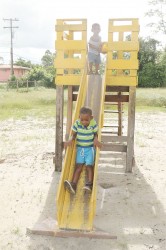
What was once “bare bush,” lined by dirt streets, is now a developing community. Pawpaw harvester Rafeez Ally also described Pearl as a quiet place with humble beginnings. According to the 35-year-old, who said he had been living in the village all his life, Pearl is a farming community. He said although not fully developed, “Pearl is a place where people can come and seek a life.” He said the village was once known for cattle farming, but now mostly gardening is done. The switch is because of the trouble residents had with cows breaking fences and damaging produce.
In the 1970s although there was no electricity, potable water or landline telephone access, Asha Nandalall said when she was a girl, a fenced yard would have been a rare site. If there was one, it meant that the owners had vicious dogs. “We use to swim in the trench every evening,” Asha said, adding that the trip to the trench was initially to fetch water for household use. She said the chore was eventually done after surrendering to the temptation of a dip in the cool blackwater trench. The walk home involved dripping children rolling their water carts, chatting excitedly.
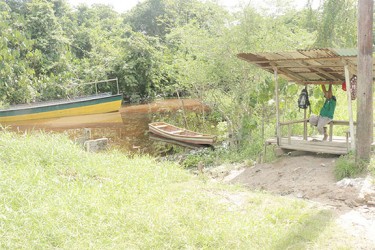
“We use to pick coconut, tangerine, bananas…” reminisced Sherwin. He said when he was a boy, the weekends never passed without a couple of cricket and football matches. Those were the days added Maria, who told Sunday Stabroek that young boys in the village used to catch fish in the trench and harvest eddoes or whatever they found to have a “bush cook.” Although most of the activities are a thing of the past, Pearl is still a safe haven for those who call it home.
“Pearl was a very clean place,” said Frances Bernard. According to her children use to pass and say ‘hello.’ Although the courtesy remains, the level of care put into the cleaning of drains has decreased.
The pride of Pearl is its nursery school, which was established in 1977. Edith Lynch and a committee, after hearing the complaints about the long journey to nursery schools situated as far away as Soesdyke or Timehri, decided that the village needed a school. “We started fund-raising,” she related, and even contacted the government of the day for further help. Edith was 37 years old at the time. Although the challenges seemed insurmountable at times, Edith said, “I felt I had to do something worth doing.” Some villagers were not confident that the school would be set up given the lack of funding and other resources, but she said she carried on with the challenge because, “you must believe in what you are doing.” At last the school was completed and opened with 77 pupils.
Today, the village provides a home for a fair number of retired folk, a few of whom are re-migrants. While the few younger people farm as a means of livelihood, the elderly, including Edith Lynch and her
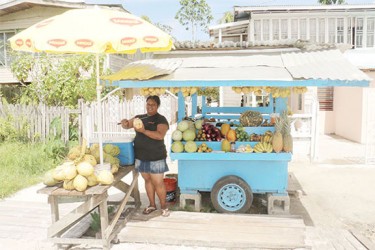
husband Eric Lynch, plant and maintain their beautiful flower gardens that enhance the village.
Some of the issues affecting residents are bad roads, a few ill kept lawns and the non-functioning community playfield. “The community needs things for the youths” said one resident, as she explained that children are forced to play on the narrow streets as an alternative.
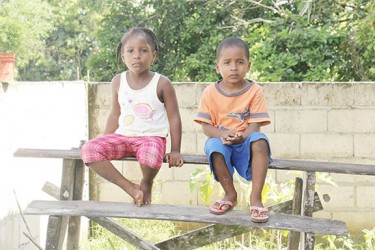
The nursery school is the only educational institution in the community, and after that children attend St Mary’s Primary in Soesdyke. And depending on their performance at the National Grade Six Assessment, children may attend a school in the city or nearby schools such as the Friendship, Diamond or Soesdyke Secondary schools.
For medical attention residents said they have the option of the Soesdyke Health Centre, the Diamond Diagnostic Centre or the Georgetown Public Hospital for medical emergencies.
Villagers hardly have to travel out of Pearl for groceries, since boats from villages on the Demerara River supply Pearl residents with fresh fruits and vegetables on a regular basis. Other items such as confectionary will have to be bought at nearby supermarkets.
For police intervention they can call or visit the Soesdyke Police Station. If a house is on fire, the nearest fire station is at Timehri.
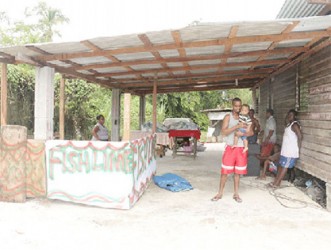
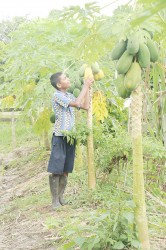
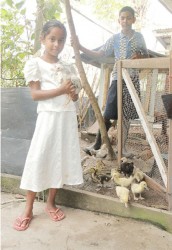
as her older brother Imran looks on.
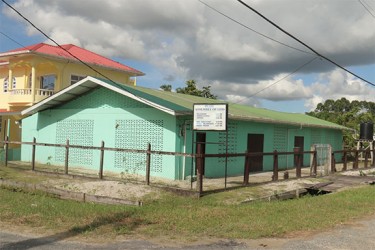
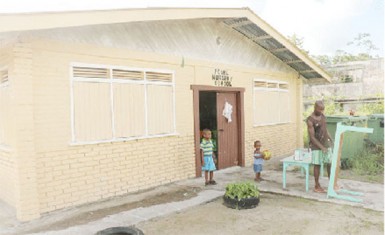
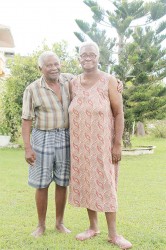
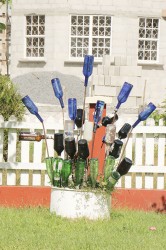
intended to bring to mind the Cacique Crown of
Honour, Guyana’s second highest National Award.





